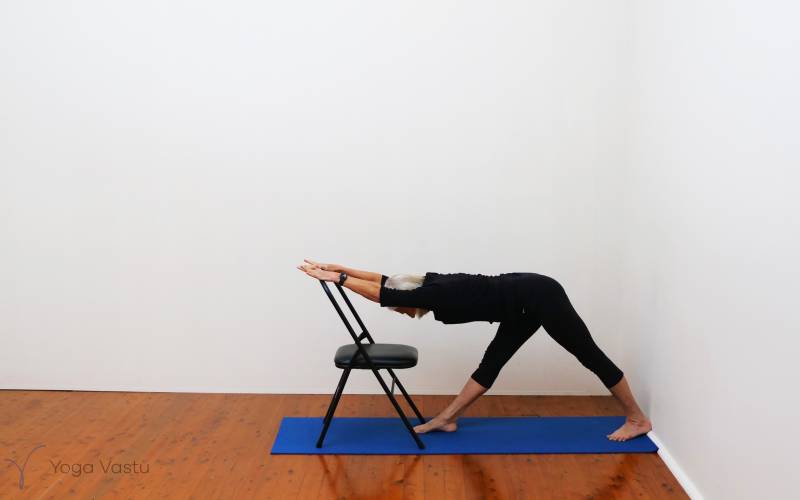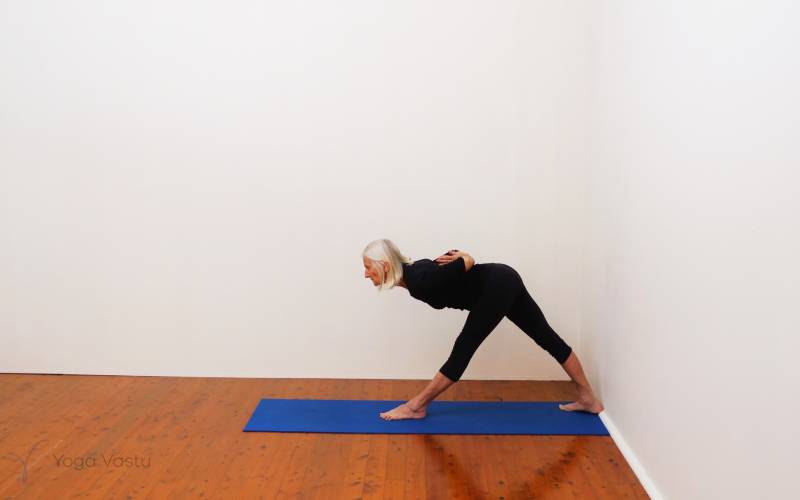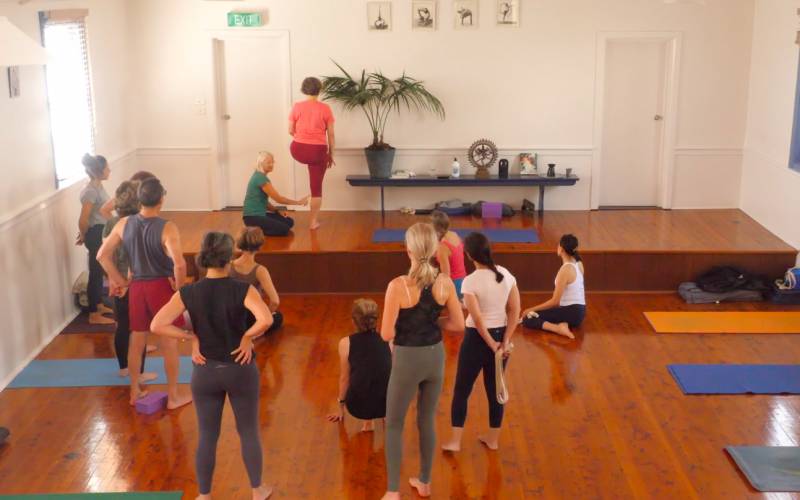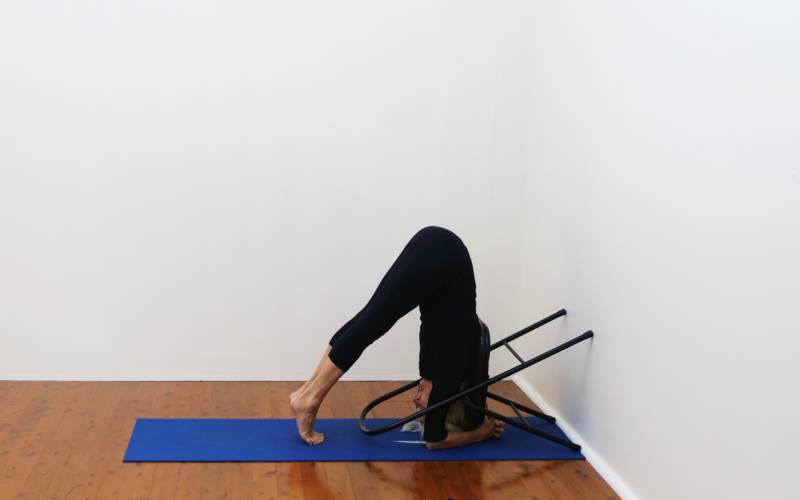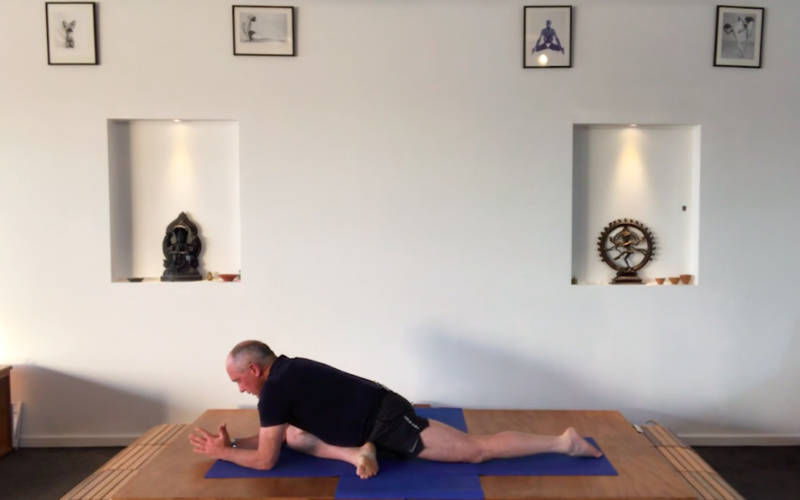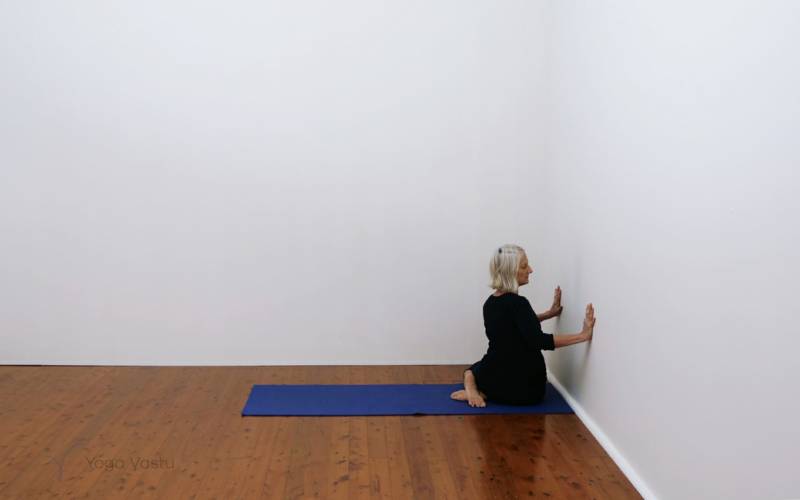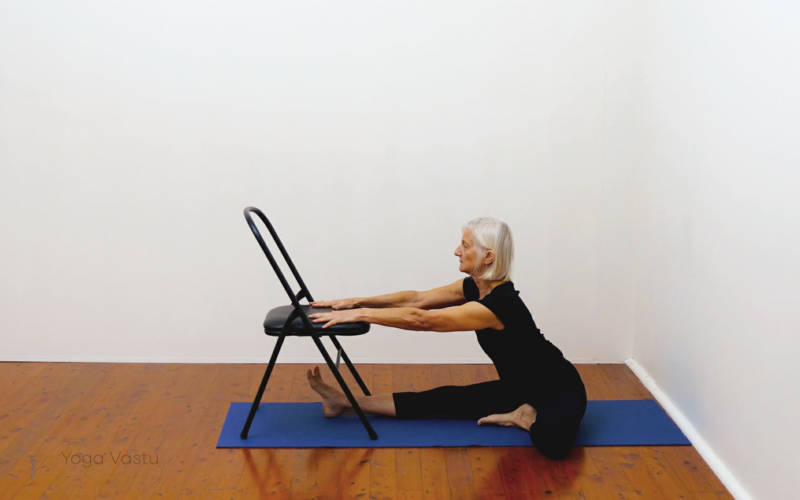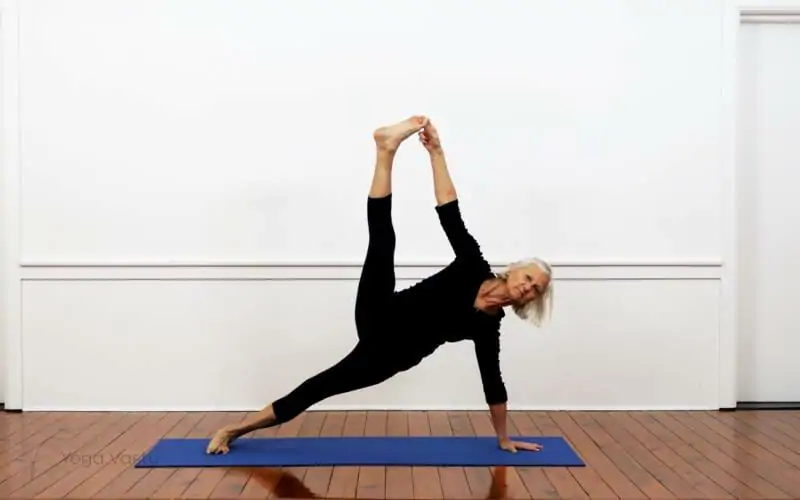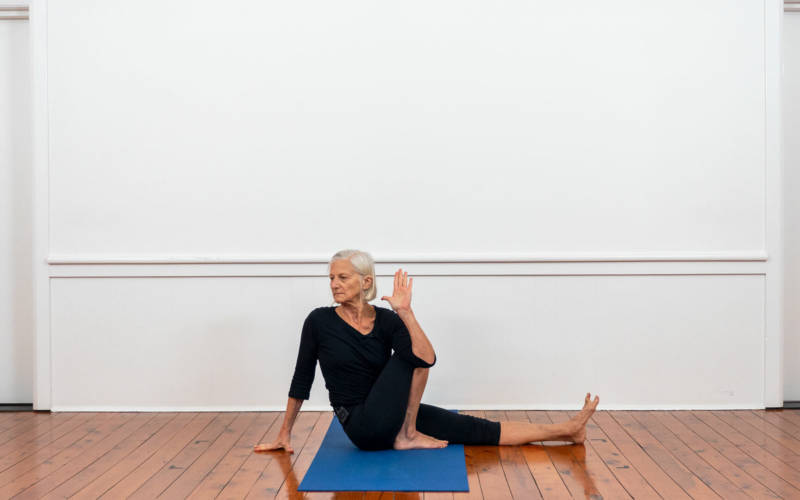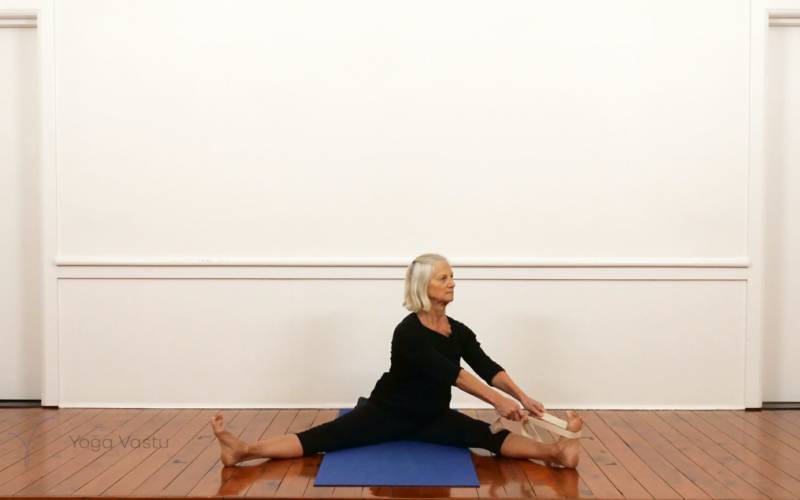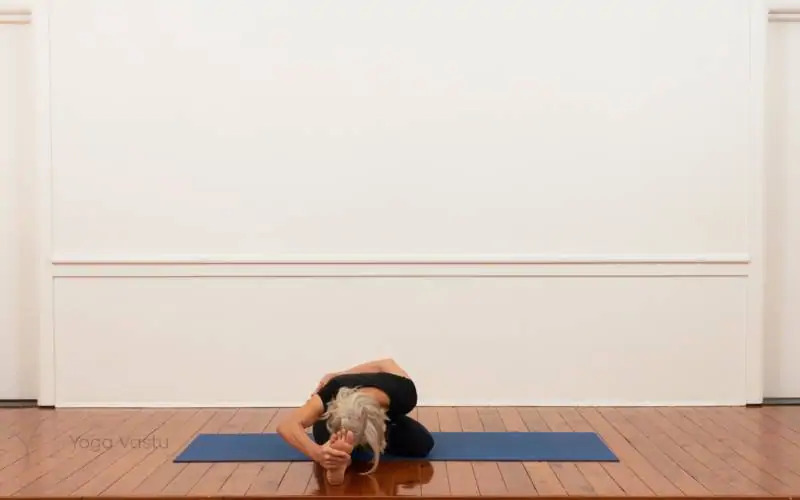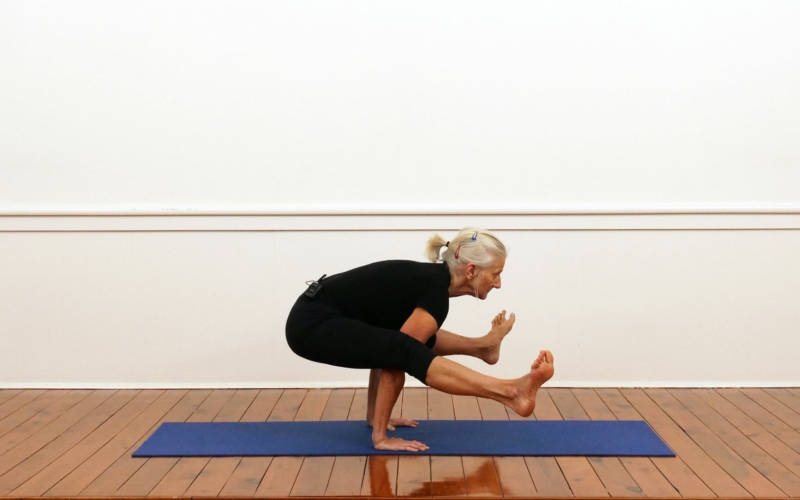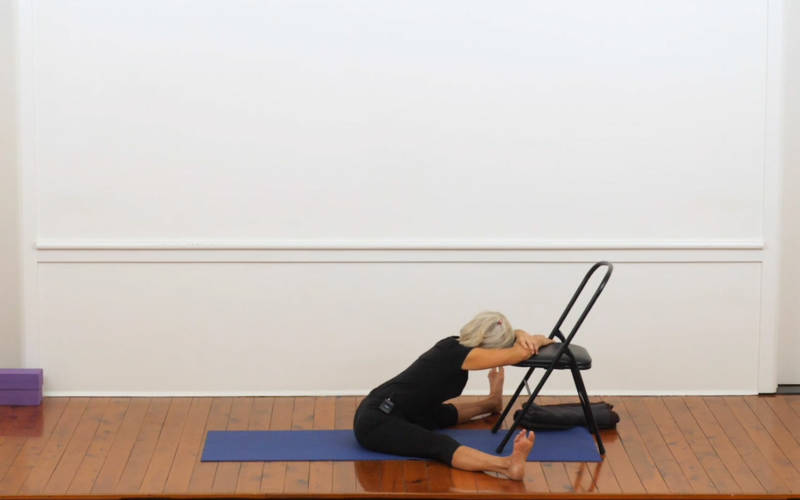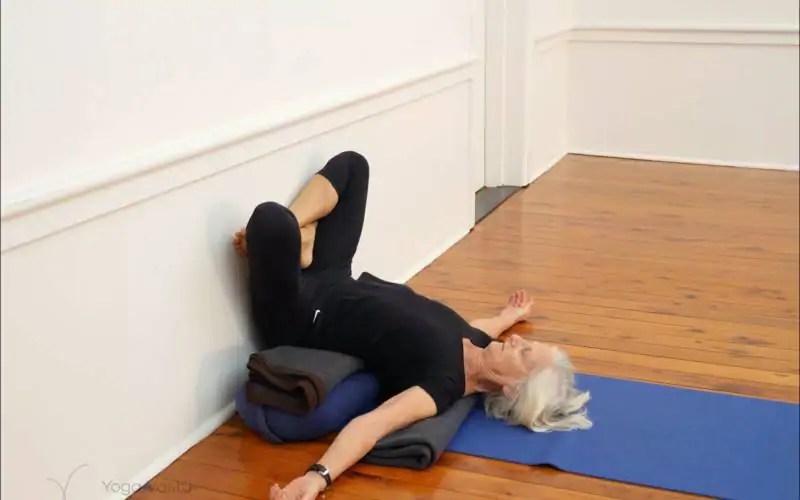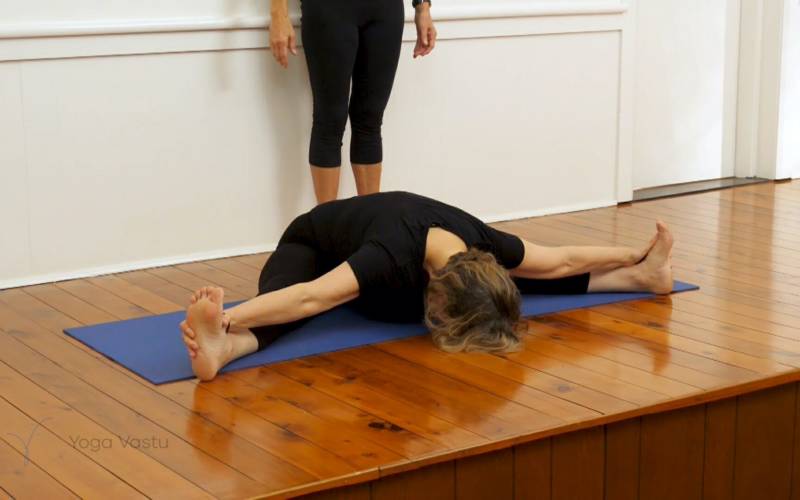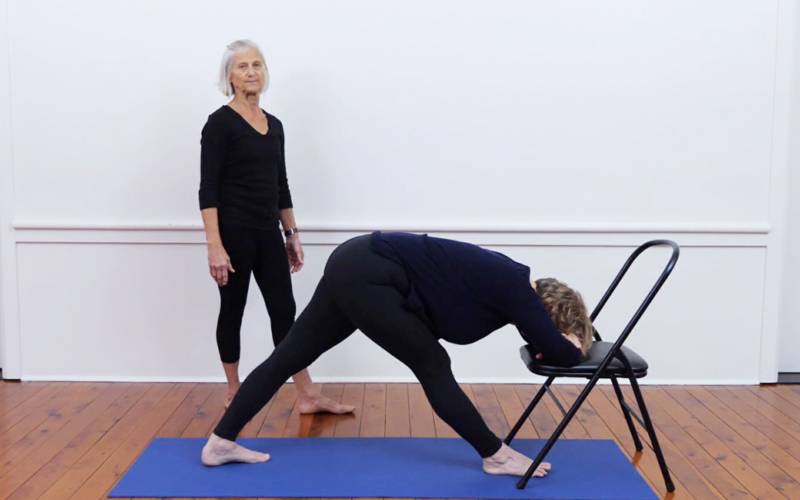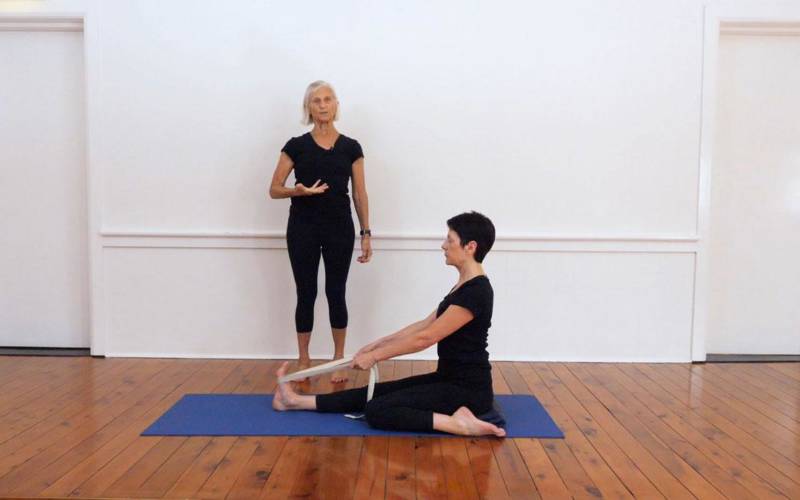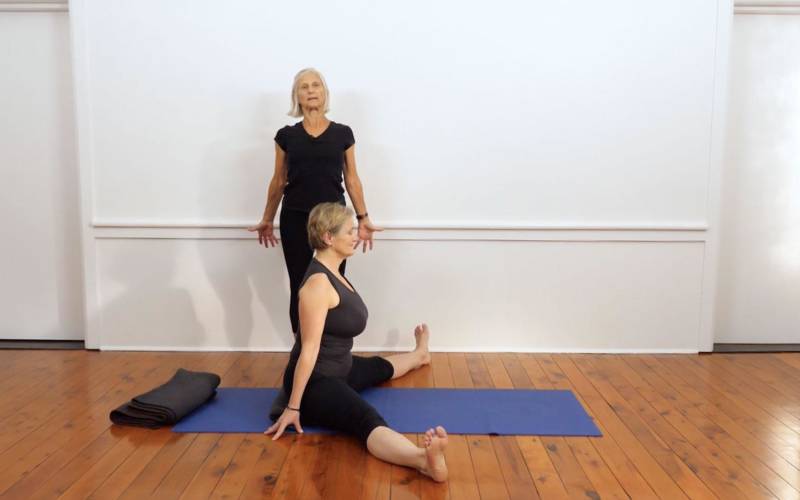How to perform Seated Forward Bend
Make sure the backs of your legs are pressed firmly to the ground as you bend over to reach your feet. Release the spine. Use a belt if necessary.
What is Paschimottanasana?
Paschimottanasana is a seated forward bend culminating in the complete release of the head to the knees and is typically the final pose in a seated forward bend sequence. Compared to many of the other forward bends, it appears a more simple pose, but is actually, an intense forward bend, requiring full extension of the hamstrings, good length of the front body, and strong inward movement of the dorsal spine.
What are its benefits?
In the Iyengar yoga tradition, Paschimottanasana takes center stage as a fundamental forward bend with a range of practical advantages. Its name originates from Sanskrit, where “Paschima” means the back of the body, and “Uttana” refers to an intense stretch. This pose involves folding forward from the hips, stretching the hamstrings, and gently massaging the spine.
The physical benefits of Paschimottanasana are substantial. It works wonders on the hamstrings, gradually enhancing flexibility and promoting better posture. As the spine lengthens, the nervous system receives a soothing massage, promoting relaxation and tranquility. This pose is particularly helpful for individuals who spend long hours sitting, as it counteracts the tightness that often develops in the back of the body.
Paschimottanasana isn’t just about the body – it also has a positive impact on the mind. Its meditative quality encourages introspection and mindfulness. As you fold forward, focusing on your breath and sensations, you create a mental space to let go of stress and worries, even if just temporarily. This makes it an excellent precursor to meditation or a way to center yourself before a busy day.
When is it best to practice and what poses does it go well with?
Timing matters when practicing Paschimottanasana. Mornings are often recommended, as your body is relatively relaxed from sleep, and your mind is clear. This asana gently awakens your body and prepares you for the day ahead. It can also be practiced in the evening to unwind and release tension accumulated during the day.
Paschimottanasana plays well with other poses, seamlessly fitting into various yoga sequences, not just forward bend ones. Transitioning from Supta Baddha Konasana to Paschimottanasana offers a natural progression from rest to stretch. Pairing it with Uttanasana provides a contrast between standing and seated stretches. Janu Sirsasana and Triang Mukha Eka Pada Paschimottanasana complement Paschimottanasana, allowing you to explore different angles of forward bending.


